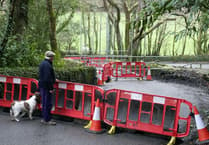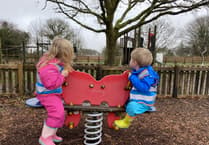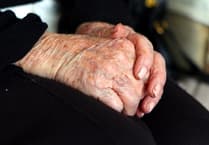THE Parish Church is named after a Roman centurion in the second century who became a Christian. Eustace was a Roman general named Placidus, who was disgraced, exiled and martyred with his family for refusing to sacrifice to the Roman gods.
ONLY one other church in England is dedicated to St Eustachius but there are dedications in Rome, Istanbul and Paris and he is patron saint of Madrid. Many churches in France are called St Eustace. Eustachius became known as the patron saint of hunters and firefighters and anyone facing adversity.
NOTHING of the original 1265 church survives. A new church was built by Abbot Robert Champeaux (1285-1324) and was dedicated in 1318. The church fell into disrepair and the chancel was without a roof but by the end of that century, the church had been rebuilt in the Perpendicular style.
IN the 15th century, further rebuilding work took place. The main addition was the Clothworkers’ Aisle, funded by Constance Coffyn, the widow of three wealthy wool merchants of Tavistock and completed in 1447.
THE font is 15th century. Probably Sir Francis Drake was baptised here. The Wagon Chest is 14th century. In the church can be found a white mouse and there are also smiling and sad faces on two pew ends.
THE church has had a ring of bells since at least the 15th century. In 1423 a new wood frame. A new bell was bought in 1574/5 and the ‘little bell’ mended. These bells disappeared, perhaps melted down, during the English Civil War (1642-1649). Today there are 10 bells in the tower.
THE North Aisle has a carved triptych commemorating the men of Tavistock who fell in the 1914–1918 war.
THE tall tower is built on four arches, one of which was said to be for the local tin miners. It is the only church tower that has a roadway going through it.
THERE are fine stained glass windows including one by William Morris.
THE organ was built to specifications drawn up by Dr Samuel Wesley, then organist and grandson of Charles Wesley. The organ was enlarged in 1952 and again in 1974 and again in 1989 with further pipes added in 1997.
With thanks to the Very Rev Christopher Hardwick and Joan Torvel.




